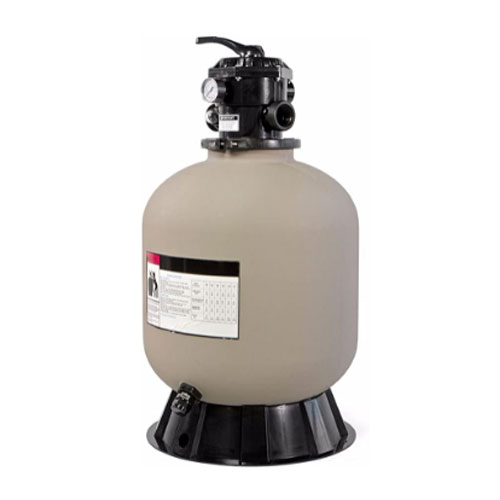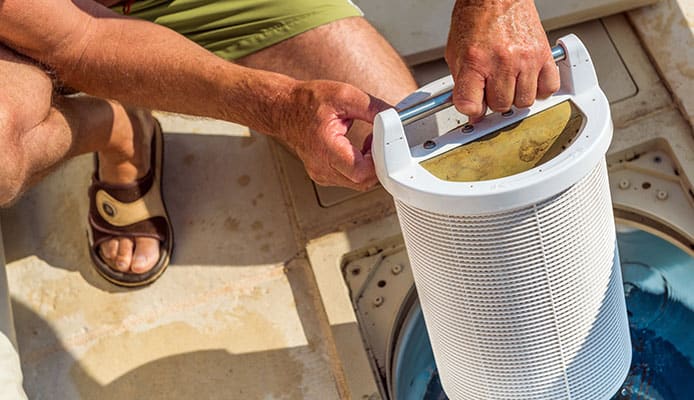
One of the most important things you need when owning a pool is a high-quality filter. It’s essential for any pool that isn’t completely drained after use, and therefore it’s important to get the best option possible to give you the highest level of water quality.
The most efficient pool filter will leave your water sparkling and fresh while not needing to perform as much cleaning. The top-rated pool filter will also save you time, money, and effort therefore it’s also worth replacing the filtration system in your existing pool if it needs upgrading.
Everything you need to think about is contained in our buying guide. Once you know a little more about the inner workings, you can better choose the best pool filter which will work best in your pool and give you that clean and relaxing environment.
OUR TOP PICK
Intex Krystal Clear Cartridge
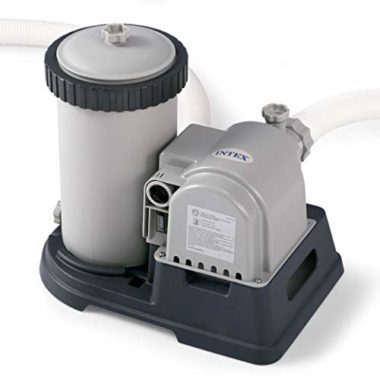
- Stand Out Features - Why We Love It
- Very easy to use
- Insulated and durable
- Great for above-ground pools
- Simple installation procedure
- Aeration technology included
Product Dimensions: 13.8 x 18.5 x 16 inches
Item Weight: 19.5 pounds
Type: Cartridge
EDITORS CHOICE
Intex Crystel Clear Sand
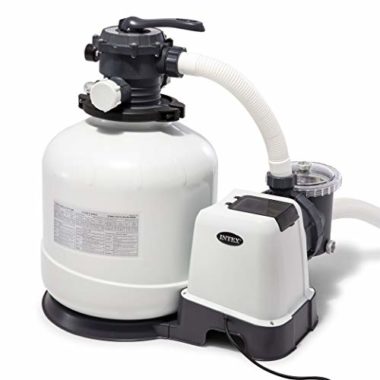
- Stand Out Features - Why We Love It
- Above-ground pools
- 24-hour timer
- 2100-gallons per hour
- Made to last
- A few sizes to choose from
Product Dimensions: 13.8 x 18.5 x 16 inches
Item Weight: 19.5 pounds
Type: Sand
BEST VALUE
Hayward Top-Mount Sand
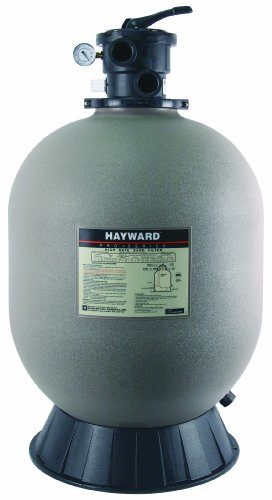
- Stand Out Features - Why We Love It
- Large pressure drain
- 7-position valve
- Made with durable corrosion-resistant materials
- Self-cleaning laterals
- Easy backwashing
Product Dimensions: 27.5 x 44.5 inches
Item Weight: 66 pounds
Type: Sand
Hayward Perflex D.E.
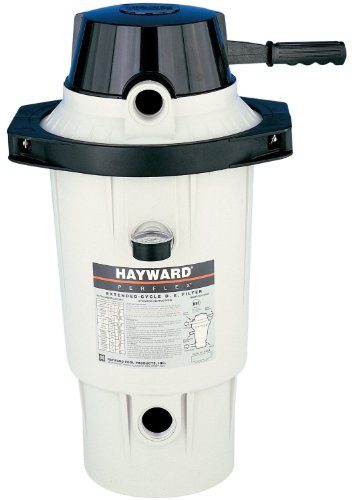
- Stand Out Features - Why We Love It
- Great value for money
- 1-year warranty
- A special pool filtration system
- Able to remove the tiniest particles
- No need for backwashing
Product Dimensions: 15.5 x 32.5 inches
Item Weight: 4 ounces
Type: D.E.
Hayward ProGrid D.E.
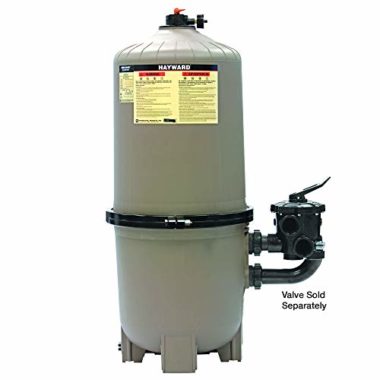
- Stand Out Features - Why We Love It
- Perfect for in-ground pools
- Heavy-duty and tamper-proof clamp for extra safety
- Made to last long without a replacement needed
- Quick access to the inner working
- Doesn't allow pressure build-up
Product Dimensions: 24.5 x 41.7 inches
Item Weight: 72 pounds
Type: D.E.
XtremepowerUS Sand Swimming
- Stand Out Features - Why We Love It
- No need to replace the sand for a long time
- Designed for above-ground pools
- Durable materials and construction
- Large filtering capacity
- Self-priming horsepower
Product Dimensions: 24.5 x 41.7 inches
Item Weight: 72 pounds
Type: Sand
Hayward ProSeries Sand
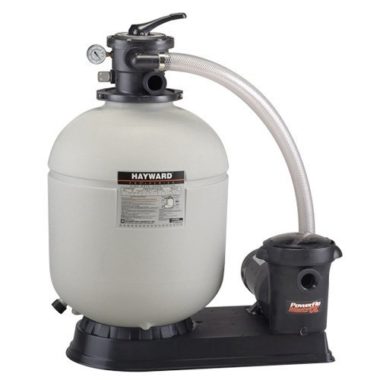
- Stand Out Features - Why We Love It
- Easy maintenance and installation
- You can assemble it by yourself
- 7-position valve that will allow you to control the flow
- The whole kit included in the package
- An excellent energy-efficient performance
Product Dimensions: 20.5 x 30.5 inches
Item Weight: 67 pounds
Type: Sand
Best Choice Products Pro Sand
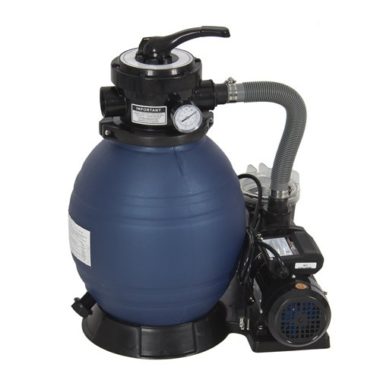
- Stand Out Features - Why We Love It
- Can filter up to 10.000 gallons of water
- Simple maintenance procedure required
- Self-priming pump
- The whole kit included in the package
- Certified and tested to meet the safety standards
Product Dimensions: 18.5 x 26.5 x 23.5 inches
Item Weight: 26.2 pounds
Type: Sand
Hayward XStream Above-Ground
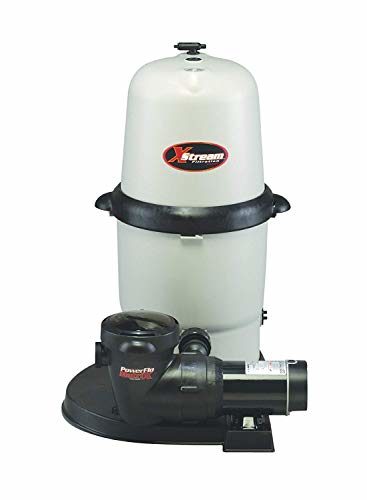
- Stand Out Features - Why We Love It
- Made for above-ground pools
- Can be used easily
- Large capacity for cleaning a big filter area
- A filter system that operates with minimal input
- Easy access to the filter
Product Dimensions: 18.5 x 26.5 x 23.5 inches
Item Weight: 26.2 pounds
Type: Sand
Pentair Plus DE
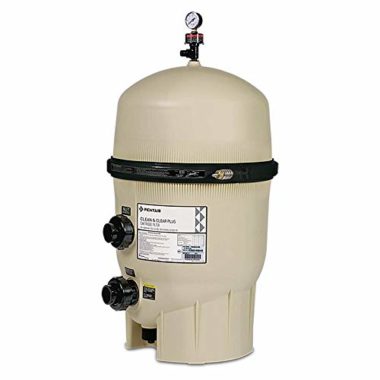
- Stand Out Features - Why We Love It
- Chemical resistant
- Made to clean 120 gallons per minute
- Easy access to the filtering system
- Professional option for sparkling water
- No need for frequent replacement
Product Dimensions: 22 x 22.5 x 45 inches
Item Weight: 75 pounds
Type: D.E.
How To Choose A Pool Filter – Buying Guide
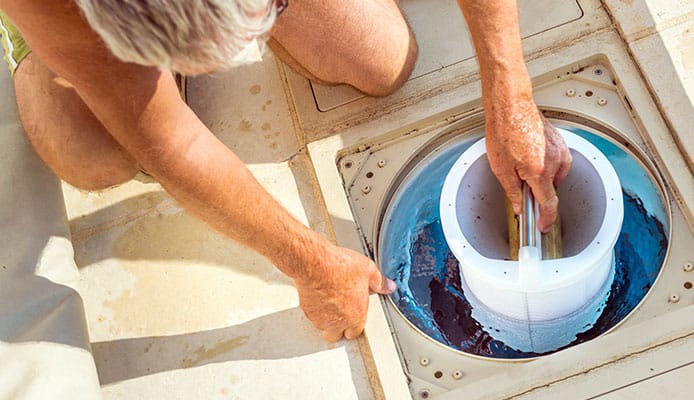
Creating the budget
You may be able to save some money by buying a filter which is cheaper than a higher quality one, but you should never skimp on the size of the above-ground pool filter or the in ground pool filter you need. In fact, you should buy a filter that will suit a larger pool, just to ensure that your swimming surface will remain clean.
We would always recommend investing in a high-quality pool filter, which does mean spending a little more. If you can find one with better quality, materials, at a slightly higher price, then you will have a pool filter that will last.
The materials of the pool filter will break down over time so it will save you money in the long run. As pool filters are worn down by chemicals, you will need to repair parts or the entire unit altogether. With a high-quality pool filter, you will not have to buy a replacement part as often, and the entire unit will not have to be replaced for a long time.
Filter’s Capacity
Many people make a mistake and end up buying a pool filter that is not capable of filtering their pool or one which is far too powerful for their pool. If you get a pool filter which is just right, you will save money when you buy the finer and in the aftercare of the filter. Getting the right size of the pool filter can be finicky, but we have a step by step guide to help you calculate the square feet, and buy the perfect size.
The first thing you need to do is to calculate the total square feet. If you have the installation or user guide, then you may have that information at hand, but if you do not, then you will have to measure it. We are providing simple equations for square, rectangle, and circular pools, so if you have a different shape, then you may have to go online to find the equation you need.
Step 1: To find the square feet or the dimensions of a rectangular pool, you need to measure (in square feet) the length, width, and depth, and then multiply all three numbers together. The result will be the volume of your pool in cubic feet. For a circular pool, take the radius (the measurement from the center to the edge (in feet) and multiply it by 3.14. This will also give you the volume of your pool in cubic feet.
Step 2: Once you have the volume of your pool, you need to calculate the capacity of your pool in gallons. To do this, take the value you obtained in step 1 and multiply it by 7.48. There are 7.48 gallons in a cubic foot so this will tell you the number of gallons of capacity in your pool.
Step 3: Now you need to calculate the flow rate. This will tell you the flow rate of the filter which you will need to buy. This step needs a little estimation of the turnover rate of your pool. If you have a filter installed and you are replacing it, then you can buy a sensor to find out your turnover rate, but they cost money and are not entirely needed.
Your minimum turnover rate would be 12. This means that all of the liquid in your pool will be filtered in 12 hours. We like to use 10 as our turnover rate. To calculate the flow rate, take the capacity of your pool (calculated in step 2) and divide it by the turnover rate (10). This will give you your flow rate.
Types of pool filters
Sand Filters
A sand filter is cheap to use, and the sand in the filter system will trap small particles and filter it for you. The water is pumped through a large bed of sand, where particles as big as 20 microns are filtered out, and the liquid coming out is clean water. Smaller particles can pass through the pool filters sand, so this type of filter will not get the swimming area as clean as a pool filter cartridge filter or a DE filter, but it is cheaper and easier to use.
This one is the most commonly used option for most of the backyard pools. They come in a variety of sizes, ranging from 2-4 feet in diameter, looking similar to a large ball. The one main advantage is that, due to the popularity of this type of filter, the sand for the filter is easy to acquire. It is also easy to add more sand and clean the filter.
The sand for pool filters will need to be replaced at some point, but you should not have to do that for around seven years. The one main disadvantage is that when the sand collects a lot of debris, the pressure can build up and it becomes harder to pump the liquid through the filter and this can add to your utility bill.
You might also like: Perfect Pool Pumps
Cartridge Filters
A cartridge pool filter falls in the middle-ground between a sand filter pump and a DE filter. Cartridge filter options are not as cheap as the sand filters and not as expensive as DE filters. Cartridge options require a medium amount of maintenance and filter particles somewhere in the middle of the other two filters and will work with your pool pump to clean the swimming surface.
Cartridge filters are a great choice and they are doing their job thanks to the cloth-like material used. It will trap particles as small as 5 microns. The surface area of the cartridge is also larger than that of sand filters so you do not need to worry about the pressure building as it will with a sand filter.
The cartridge filter is cleaned by removing the filter and washing it. The options with cartridge are great filters for saving energy, and they will last a long time with minimal maintenance and cleaning. You will have to change the cartridge every three years, so make sure that you budget for that.
D.E. Filter (Diatomaceous Earth)
Diatomaceous Earth (DE) is a natural and organic material that can be ground up into fine dust and used to filter the surface. This type of filter is made up of elements or grids which are covered in fabric and then coated with the DE powder.
As it flows through the filter, the white DE powder traps the smallest of particles. Of the three filter types on our list, this type of filter will filter the liquid the best, giving you the cleanest surface to swim in. The disadvantage of the perfect filter is that the filter is expensive and it requires more maintenance.
This filter system is extremely reliable and durable once maintained well. You will need to regularly check the filter for wear and tear, and at least twice a year, you will have to remove the filter for cleaning, which is a simple procedure. The DE material will also need to be replenished on a regular basis, though this is easy to do.
FAQs
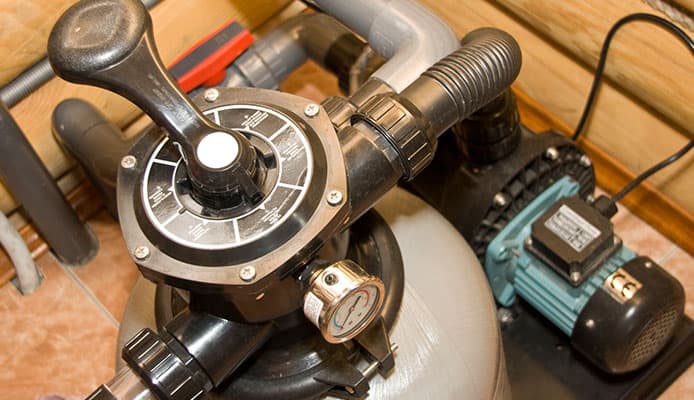
Q: How Does A Pool Filter Work?
All filters work in much the same way. Water is pulled through a material, and the particles in it are trapped, and cleansed liquid flows out of the other side. The exact way in which the pool filter works will depend on the type of pool filter.
A sand filter will pump the liquid through, and the dirty liquid will enter the inlet pipe. Thanks to gravity, the water will be filtered as it travels through it. The dirt will be caught by the sand, and the cleansed water will flow back into the pool.
As more and more particles are collected, a layer of dirt and grime appears on the top. When this happens, the pressure will increase, and it will take more energy for the pool water to get through the sand. Once that happens, the system will need to be back washed by revising your pool pump to force the water through the pump from the other side. If you were wondering what is backwash or backwashing is, then the article attached will help.
If you are using a DE filter or a cartridge filter, then the operation is much the same. Water is pushed through a fabric or material, instead of being pulled through it, but the fabric/material does the same job as the pre, trapping particles, and usually smaller particles. The liquid which comes out of the other side will be cleansed and pumped back into your pool.
With a DE filter, you can backwash it much like a sand filter, and add more of it when you are done (making sure to divert the pool liquid to the drain when you do). For a cartridge filter, you do not need to backwash it. Instead, you take it out and rinse it.
Q: Top Mounted Or Side Mounted Valve?
The top mounted-system and the side-mounted system is a choice you may have to make when you are installing a filter. Both systems run in the same way, but do have differences in the ease of installation and the installation cost. It will be up to you which system you decide to use.
A top-mounted system is a cheap option to install. The filter is easy to install in this way and the pipes are easy to install too. There are fewer parts needed, less time needed to install the system, and less labor needed to install the system. This means that overall, it will cost you less money to install a top-mounted system. However, it is harder to maintain a top-mounted pipe.
With a top-mounted system, you cannot reach the content inside without first removing the pipes on top. This makes them more difficult to maintain. Side-mounted systems cost more to install, but once the installation is complete, you can get into it without having to move any pipes.
Q: Which Is Really The Best Pool Filter Type?
The best filter type for your pool will depend on whether you have above ground pools or an in-ground pool and also your budget and experience. Cartridge filters are great for beginners as they are very easy to maintain. They will pick up most particles, without costing too much money, and they do not need to be back-washed like sand filters, or DE filters do. These are the easiest to use filters, but you will have to change them every three years.
If you are on a budget, you can consider a sand filter, and have cleansed swimming water with regular maintenance. On the other hand, the DE filter will provide you clearer results, and is made for commercial use too. They filter out the smallest particles, but they do cost a little more money than the other filters.
Q: How To Clean Pool Filter?
To clean a sand filter or a DE filter, you need to backwash the system to remove the layer of grime and dirt on the filter. Make sure to route the old pool water away from the cleaned one, into a drain. The cartridge filter cleaning procedure is different from the sand filter or the DE filter.
You should first locate the cartridge filter and remove it from its place. You can rinse it with cleansed water, or use a spray nozzle to clean it better. But you must do it once the cartridge is removed from the water. Waiting too long might dry the dirt over it, and make the cleaning procedure more complicated. Once cleaned, you should let it dry in the sun.
You can also use a bucket full of water and add some pool chlorinator at a ratio of 1 part to every 6 parts of water. You can leave the filter overnight, but we recommend letting it sit for up to 5 days. If you need to use your pool in this time, then fit your replacement filter and rotate them each time you clean the filter.
Once the filter has soaked, take the filter out of the chlorinated water and rinse it in a bucket of cleansed water. You should notice the water change color as the dirt is released. Allow the filter to dry in the sunlight once again. Once the filter is dry, you should brush off any dirt and dust once again.
Q: How To Change The Sand In A Pool Filter?
Once the pump is turned off, remove the drain plug from the bottom of the filter tank and let any remaining water drain out. This may take some time, so be patient. Next, remove the hoses which are connected to the multi-port valve. If the pipes are hard plumbed, then you will have to cut them now and add fittings when you want to reattach them. Remove the clamp which holds the valve to the tank. Remove the multi-port valve. Cover the top of the sandpiper to prevent sand from getting in there when you add the new sand.
Use a vacuum to remove all of the old pool sand. You could also use a scoop if you do not have a shop vac. Rinse out the remainder. Fill the tank halfway with water to protect the interior workings when you pour it in. Add the new sand (one bag at a time). Fill the tank with water and connect everything back to the positions they started in. Backwash the filter and then run your pump again.
Q: How long should a pool filter last?
Pool-filter cartridges can run for about 2,000 hours in a filter pump. Usually, filter cartridges have to be replaced once every one to two years. The filter, however, will not last as long if you enter the pool with suntan lotion, deodorants, hair-care products, and other chemicals.
Globo Surf Overview
The best pool filtering system will not only ensure that your pool is cleansed, but it will also save you a lot of time and effort on pool maintenance. All of these products in our pool filter reviews will ensure that your pool is kept cleansed and healthy.
A level of pool maintenance will always be required though, and it’s a good idea the get the best pool skimmer in order to not overwork your filter. It’s also important to know how to remove sand from your pool as this can settle on the floor with other debris.
There are many types of pool cleaner out there, and you want to choose a great pool cleaner to be able to work with your pool filter to ensure that the water remains fresh. All the filters that we have looked at here are of the highest quality and will leave your pool cleansed and fresh, allowing you to relax and enjoy yourself with peace of mind.


